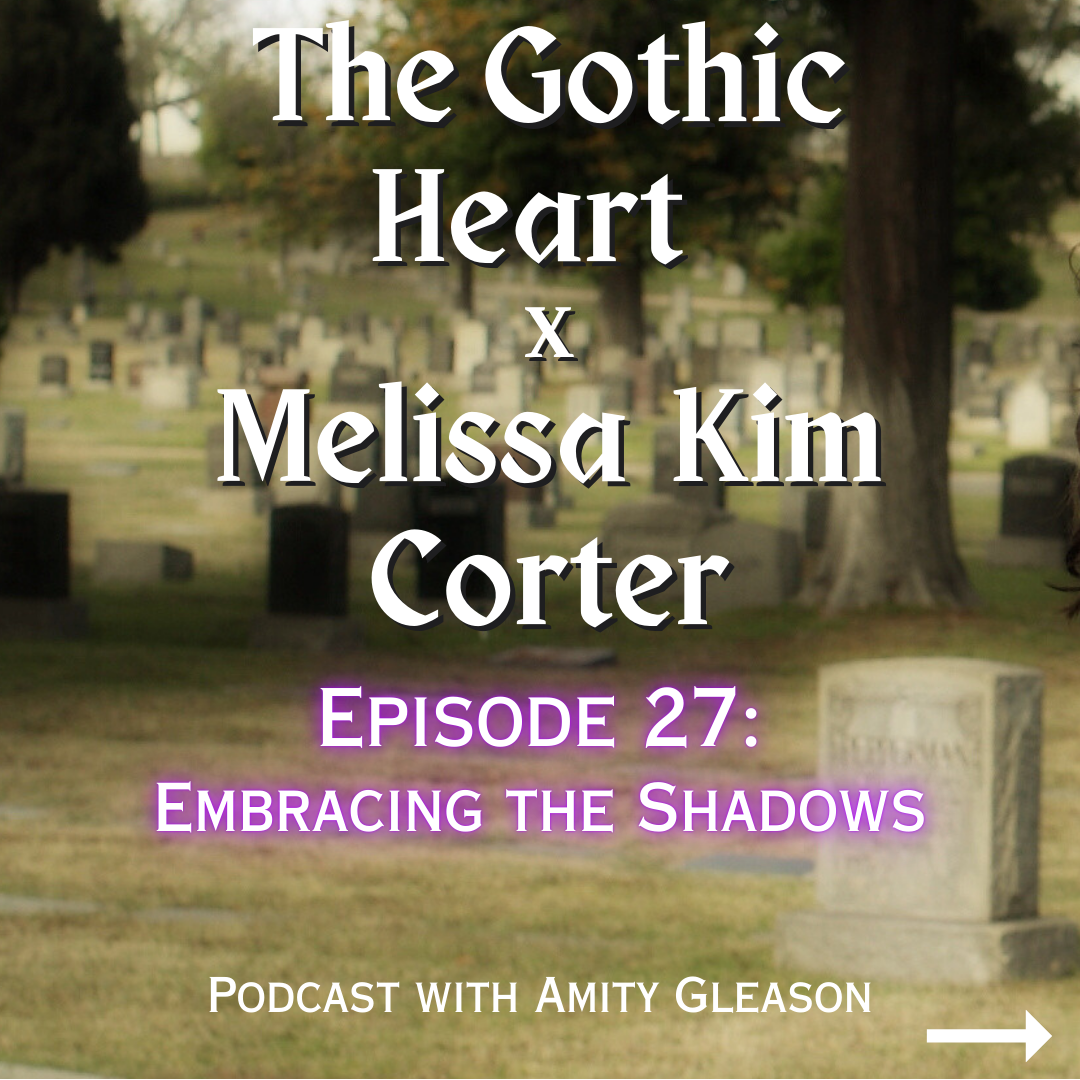
Embracing the Shadows with Melissa Kim Corter
In this latest episode of The Gothic Heart, I had the absolute pleasure of chatting with the brilliant Melissa Kim Corter, an expert in shadow work and depth psychology. We ventured into the world of the unconscious, where emotions and hidden parts of ourselves live, and how we can start to explore those spaces to feel more whole and grounded. Melissa’s insights were so fascinating, especially for someone like me who’s still pretty new to these concepts. So, let’s break down some key takeaways from our conversation.
Understanding the Shadow Self and Hidden Parts
Shadow work might sound mysterious or even intimidating, but Melissa breaks it down beautifully. It’s all about recognizing the parts of ourselves that we aren’t fully conscious of yet. These hidden parts—the shadow self—are the parts of our personality or emotions that we’ve pushed down, repressed, or simply haven’t discovered. Some of it might include the traits we’re not too proud of, like anger or jealousy, but Melissa also explains that the shadow can hold positive qualities we haven’t tapped into, like confidence or creativity.
What stood out to me was how she described shadow work as a creative process rather than something clinical. She made it clear that it’s not all about trauma or difficult emotions; it’s about accessing those hidden parts in a way that feels playful and transformative. Whether it’s through art, journaling, or even just allowing ourselves to feel and process our emotions, shadow work helps us make peace with the unknown.
The Uncomfortable Process and Emotional Release of Shadow Work
Melissa was also quick to point out that while shadow work can be uncomfortable, the emotional release it brings is transformative. Sometimes, we’re already doing shadow work without realizing it. If you've ever been stuck in traffic, feeling that bubbling frustration rise up inside you, that’s your shadow self reacting. It’s not always about sitting down with a notebook—sometimes it’s just observing those emotional reactions in everyday life.
But if you’re ready to intentionally work on your shadow, Melissa recommends starting creatively. Since the ego tends to block change (it likes things to stay just the way they are), engaging the shadow creatively lets us slip past that resistance. Shadow work doesn’t always have to be about reliving painful experiences, either. It can be done in a fun, creative way that allows for healing and growth without reactivating trauma.
Starting Shadow Work: Creating a Darkness Journal
One of Melissa’s practical tips for getting started with shadow work is creating a “darkness journal.” This isn’t your average notebook—it’s a space where you can get real, raw, and unfiltered. Grab a notebook and start writing by hand (no typing allowed!). Melissa explains that writing by hand helps us access deeper brainwave states, moving from the busy, thinking mind to a more creative, intuitive state. It’s in these deeper states that we can tap into those hidden parts of ourselves.
In the darkness journal, you can let it all out—whatever you're feeling, whatever’s been building up. You don’t have to share it with anyone, and if it feels too vulnerable, you can burn the pages afterward. The idea is to give those suppressed feelings a place to go so that they stop being pushed down. The more we give these emotions a home, the less power they hold over us.
The Concept of Radiant Darkness
One of the most beautiful parts of our conversation was when Melissa introduced the idea of “radiant darkness.” It sounds almost paradoxical, right? But Melissa explains that darkness doesn’t always have to be a scary or negative place. In fact, it can be a source of creativity, stillness, and depth. It’s like the night sky—vast and dark, but dotted with stars that make it beautiful. Darkness, when we learn to embrace it, becomes fertile ground for growth and transformation.
She also connected this to the idea that everything is born out of darkness—whether it's a seed in the ground or a new idea brewing in our subconscious. We often fear the unknown simply because it’s unfamiliar, but once we start to take small steps into that darkness, we realize there’s nothing to fear. In fact, it can be a space of incredible potential.
Conclusion
This conversation with Melissa Kim Corter really opened my eyes to the beauty and power of shadow work. It’s not about facing some terrifying aspect of yourself but about getting curious and creative with those parts of us that are hidden beneath the surface. Whether through journaling, creativity, or simply observing our emotional reactions, shadow work is a path to greater self-awareness and healing.
Melissa’s approach is all about trusting yourself, embracing both the light and the dark within you, and finding peace in the process. If you’ve ever felt the pull to explore the hidden parts of yourself or want to connect more deeply with your emotions, shadow work might be the perfect place to start.
Leave a comment
This site is protected by hCaptcha and the hCaptcha Privacy Policy and Terms of Service apply.